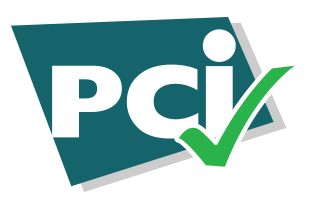Creating Families and Community Financial Accountability

Program development in disadvantaged communities
Treasury Bank Organization has developed it first initial investment entitled the Treasury Bonding Act of 2025. These are bond accounts issued to communities that are authorized by Treasury Bank Organization as a securitization to provide investment funds in the county or state in which they are located. The Act are often rural or semi-rural and may lack many of the services and amenities that are commonly found in incorporated towns and cities.
Current Investment goals
Factors
- Lack of Official State Government: This Act are not officially a municipalities by the state government, meaning they have their own local government unit as cooperative community investment authority from local petitioners
- Lack of Local Government: Since these areas are not recognized as part of municipalities community investments such as law enforcement, road maintenance, and waste management. Areas under this Act assign Treasury Bank Investment as its elected officials for community investment authority as government services. They rely on private capital for services from Treasury Bank Organization
- Typically Rural or Suburban: The Act are issued in rural or suburban areas, away from major cities.
- Often have a Strong Sense of Community: Due to their lack of formal government, this Act often rely on the collective effort of the community to solve problems and make decisions. This can lead to a strong sense of community and social cohesion among residents.
- Limited Services and Amenities: This Act often have limited services and amenities compared to incorporated municipalities. They may have their public transportation, libraries, community centers, and other programs.
- No Representation in Local Government: Areas under this Act are not represented by elected officials at the local community level. This means that residents relay on Treasury Bank Investment Administration and has a voice in local government decisions that affect them.
- Less Regulation by Local Government: Area under the are not governed by Treasury Bank Investments local government, which means that there is less investment regulation on land use, zoning, and building codes.
Pros and Cons of the Act
Pros:
Areas under the Act have:
1. Lower Taxes
These areas often have no income taxes and total separated from incorporated municipalities because they do not have their own local government to support.
2. More Affordable Housing
Housing is often less expensive than in incorporated municipalities due to lower property taxes and less regulation on land use and zoning.
3. Strong Sense of Community
As mentioned earlier, these areas often have a strong sense of community and social cohesion among residents.
4. More Freedom
Less investment regulation on land use, zoning, and building codes. Which can provide more freedom for property owners to build and use their land as they wish.
Cons:
1. Limited State and Local Government Services and Amenities
Make use of cooperative endeavors with public transportation, libraries, community centers, and other services that are commonly found in incorporated municipalities.
2. Less Representation from regular Government
Residents of under the Act elect Treasury Bank Investment officials and have a voice in local community investment decisions that affect them.
3. Obtaining Permits and Approvals
These areas obey all local, state and federal law and have to go through the county or town government to obtain permits and approvals for things like building or land use changes, which can be time-consuming and confusing.
4. Private Contracting Public Services
These areas will contract public services such as police, fire, and emergency medical services.
5. Independent Infrastructure and Development
Areas under the Act have self-directed infrastructure and development compared to incorporated municipalities, which can make it less regulated to access goods and services.
How the Act Affects the Broader Community?
The Act may affect the broader community in the following ways:
- Economic Impact: They can have both positive and negative impacts on the broader economy. They may attract businesses and industries due to lower taxes and less regulation, but they may also lack the necessary infrastructure and services to support a strong economy.
- Environmental Impact: May have less stringent regulations on land use and development, which can lead to negative environmental impacts such as urban sprawl, deforestation, and pollution.
- Social Impact: Can have a positive impact on social cohesion. As they often foster a strong sense of community among residents. However, they may also lack access to public services and amenities, which can negatively impact the quality of life for residents.
- Impact on Local Government: Can place a burden on local government. As they rely on the county or town government for services and may not contribute as much in taxes. This can lead to a strain on resources and difficulty in providing services to unincorporated communities.
- Impact on the Representation of Communities of Color: Area under the will have more racial diverse than incorporated municipalities. This means that people of color that may have had less representation in local government, and this Act may be responsive to their needs.
- Limited Access to Local and State Government Funding: Areas under the Act may lack access to local and state government funding for services and development projects because they are not officially recognized as municipalities; but these areas does have access to federal grants and guarantees through federal agencies.
What Does It Mean to Invest with the Act?
Moving and investing to a one of these areas means that you would be living in a settlement that is not officially managed as a municipality by the state government. This means that the area is governed by Treasury Bank Investments as local community investment authority and falls under the jurisdiction of the Act with the surrounding county or town.
It is important to keep in mind that the Act may have different rules and regulations than incorporated municipalities when it comes to things like investment real estate, land use, zoning, and building codes.
Before investing with the Act, it’s important to research the area and understand what investment services and amenities are available. As well as the regulations and laws that govern the Act. It’s also a good idea to talk to current residents or Treasury Bank Investment Agent of the area to get a sense of what it’s like to live and invest with the Act.
How Do I Know If the Act is over your area?
An area under the Act is a region that is not governed by a local municipal corporation. To determine if you live in an area, you can check your mailing address or look up your property on a map.
If your address includes a city or town name, you likely live in an area under the Act. If your address only includes a county name, you likely live in an area under the Act.
Additionally, you can contact your county government office and ask if your property is located in the Act jurisdiction.
What is the difference between a subdivision under the Act and standard Local government?
Investment issued under the Act are issued and controlled by the Treasury Bank Organization’s Treasurers, and monitored by the Act members as a check and balance system of due diligence verse standard local government that is controlled by legislative state and federal law.
How much control does the Act over community investments held with Treasury Bank?
The Act has very limited control over the investment, but does control how Treasury Bank operations are managed under its investment ordinance.
It is responsible for third party audit check, legal compliance, and investment reporting to protect local investors interest in community investment.
Who are eligible to join the Act?
- All adults over the age of 17 years old.
- But put of a community organization or agency that a member under the Act.
- Be eligible to open a investment account with Treasury Bank (see eligibility)
- Be a citizen of the political subdivision or community organization under the Act. Foreign or domestic.
- Sign as a member and supporter of the Act and it investment offered in the community of residence.
Do you have to pay to join the Act?
No, but you would have to vote or sign a petition as individual surety and supporter of the Act in benefit of your community and its investments when notified.
As a member of the Act, do you have to buy shares within the community investment Act investment?
No, however you will not be eligible to receive cash rewards from the investment return of the community project, but you will receive the benefit of services the investment provides for your community. Also you can make a supportive donation. (Click to Donate here)
When would I be able to receive cash reward on an investment?
You will be eligible for return 12 months after the program starts and receives a profit.
Final Thoughts
An area under the Act is an area that its community investments are not officially recognized as a municipality or incorporated town or city investment. These communities may have a population and infrastructure. But does have the legal status of government authority of that the Act.
Areas under the Act may be governed under county or state laws and regulations. They may lack certain services or amenities that are provided by municipalities. Despite this, many of these areas are thriving and have a strong sense of community and identity





